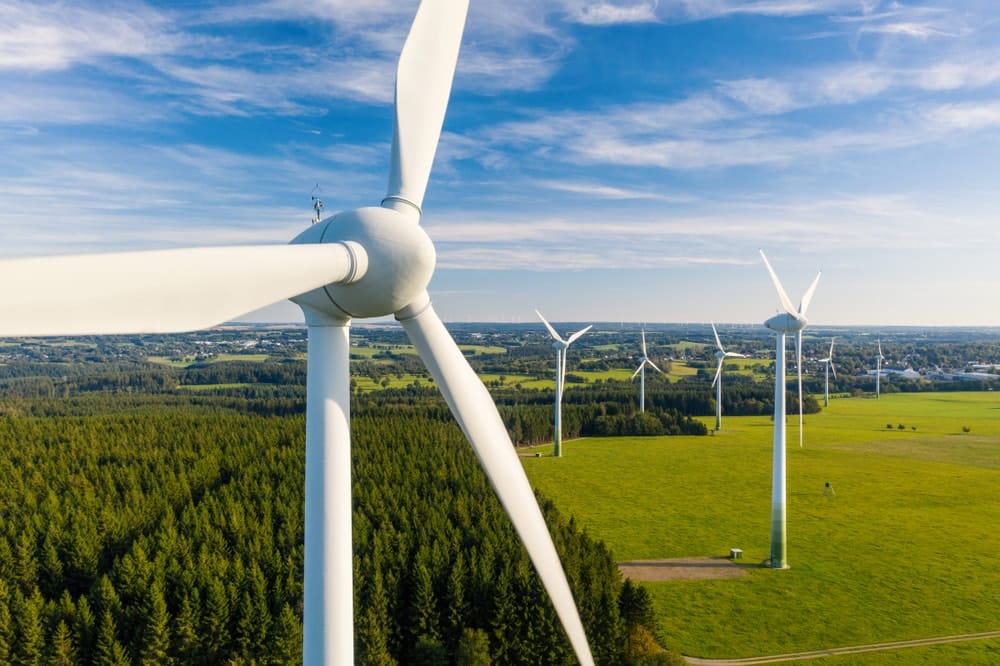Equipment Enclosures & Accessories for the Energy Sector
Electronic enclosures in utilities have a wide range of applications and are essential for the safe operation of utility operations. However, they can be subject to various challenges, such as extreme temperatures, dust, dirt and water immersion, vibration, and shock. To ensure optimal performance and safety, the enclosure must be properly designed and protected against these elements.
Our electronic enclosures and accessories provide robust protection from external sources such as dust and dirt and can perform under harsh environments with temperature and humidity changes.
Electronic enclosures that serve the energy industry
Renewable energy includes solar, wind, and geothermal sources, which are growing in importance daily. With many years of experience, our engineers have built equipment racks designed for the different needs of these alternative energy sources.

Solar
The most abundant energy source on Earth is solar power. This form of renewable energy has become the fastest-growing sector in the world, with more and more countries investing heavily in solar technology.
Solar panels have allowed it to power both airplanes and charge electric vehicles. Still, the space industry was one of the earliest adopters of this type of renewable energy. The Vanguard 1 satellite, launched in 1958 and remains the oldest human-made object still orbiting Earth, used solar power to operate.
On a much larger scale, solar energy is being produced all over the world. California’s Mojave Desert is home to Ivanpah Solar Power Facility, one of the world’s largest operating solar thermal energy plants.
Energy from the sun is expected to produce 50% of the world’s total energy. With that in mind, we can build and design racks applicable to solar power.
Enclosure requirements
● Durable to withstand weather hazards, UV radiation, high temperatures
● Lightweight, corrosion-resistant, durable
● Easily modified to meet specific applications

Wind
Wind power has been around for centuries, with the first example of wind power technology being used in Ancient China in 2000 BC. Fast forward to the 1940s, and the first modern turbine was built in Vermont. Today, however, one of the world’s largest turbines can be found across the US – particularly going to Hawaii, where 20-story tall turbines with blades the length of a football field are located.
What’s more, wind power is unique in that it does not require any water to operate – no wonder that by 2030, it is expected to save around 30 trillion bottles of water in the US alone. As such, this renewable energy source is becoming increasingly popular and will remain an integral part of our energy portfolio for many years.
Wind energy is one of the most economical renewable sources today. It’s an essential part of the world’s energy mix, providing 6.5% of all electricity generated in 2020.
Enclosure requirements
● Lightweight, weather-resistant
● Ruggedized construction to withstand harsh environments

Geothermal
Geothermal energy is an incredibly versatile and environmentally friendly form of energy generation. It has one of the lowest carbon footprints of all energy sources because it typically only involves drilling two to three wells, meaning there is no need for transportation or further processing.
Furthermore, its use can extend far beyond typical power plant applications. Geothermal energy can be used to heat buildings, grow plants in greenhouses, heat water for fish farming, pasteurize milk, and even pipe it underneath roads and sidewalks to keep them clear of snow. Its reach is limited only by the imagination.
With its low carbon footprint and wide range of applications, geothermal energy is a great way to reduce our reliance on fossil fuels while still providing a reliable and sustainable form of energy.
Geothermal energy is already heating many homes in the US with continued strong support from Bill Gates as he also added a geothermal startup to his clean energy fund. This renewable power is designed to use the earth’s natural temperature to heat and cool homes and doesn’t burn fossil fuels.
Enclosure requirements
● Durable materials such as aluminum
● Withstand high temperatures due to the hot steam
● Offer protection against dust, dirt, and other harsh environments.
Electronic enclosures manufactured for water treatment facilities
Water treatment is any process that improves the quality of water to make it more acceptable for a specific end-use. It could be for drinking, industrial water supply, irrigation, river flow maintenance or recreation.
The control & management of water treatment facilities is a complex task requiring thousands of measurement devices to provide consistent data to various locations. That’s why these devices must be in proper cabinets, which is why our custom-designed racks & electronic enclosures have been specifically designed for the water treatment industry.
Enclosure requirements
● Must perform under harsh conditions, often requiring use of a gasket for weatherproofing
● Shock & vibration resilience
● Corrosion-resistant material
● Impenetrable by rodents
Custom equipment racks & accessories by A&J Manufacturing
We are committed to ensuring our customers receive the right products for their intended applications. In the utilitiesindustry, specific enclosure requirements are needed to ensure electronic devices are safe from outside elements. We can achieve any specifications you have in mind with our custom services.Our engineers invest significant time in understanding the application’s end-use with extensive pre-planning so that the result is an enclosure with tight tolerances and all components functioning as required. We want to collaborate with you to ensure you’ll have a scalable renewable energy or water treatment facility enclosure. Contact us now for more information regarding our electronic enclosures or . request a quote today!
